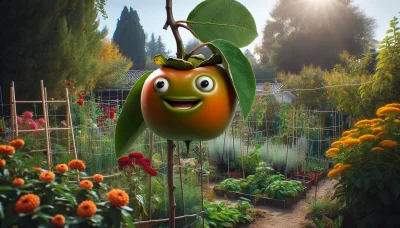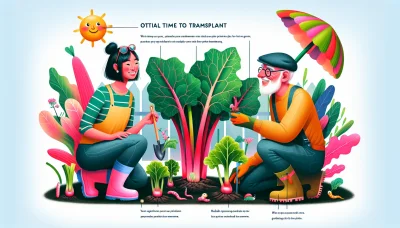Planting cucumber seeds Quiz
Test Your Knowledge
Question of
Planting Cucumber Seeds: A Beginner's Guide
Planting cucumber seeds is a rewarding activity for many gardeners, providing a fresh, crisp addition to salads, sandwiches, and various dishes throughout the summer. Cucumbers are popular among beginners and experienced gardeners alike due to their relatively easy cultivation process and their ability to thrive in various climates. To start, select a sunny spot in your garden and ensure the soil is warm and well-drained. Planting seeds directly into the ground, about half an inch deep and spaced a few inches apart, after the last frost, will yield the best results. With regular watering, some patience, and a little bit of care, you'll be enjoying your very own home-grown cucumbers in no time.
Choosing the Right Cucumber Seeds
When it comes to gardening, selecting the right cucumber seeds is crucial for a successful harvest. There are several types of cucumber seeds available, each suited for different gardening needs. For those looking to grow cucumbers in small spaces, bush varieties are ideal as they require less room to spread. Climbing or vining cucumbers, on the other hand, are perfect for vertical gardening, allowing for efficient use of space and easier harvesting. It's also important to consider the purpose of your cucumbers. For pickling, choose varieties that produce smaller, firmer fruits. For fresh salads, larger and more tender varieties may be preferable.
When selecting seeds, always opt for high-quality, disease-resistant varieties to ensure a robust crop. Consider your local climate and choose seeds that are well-suited to your growing conditions. Early maturing varieties can be a great choice for gardeners in cooler climates with shorter growing seasons. Lastly, don't forget to experiment with different types and find what works best for your garden. Happy gardening!
Preparing Your Soil for Cucumber Seeds
To ensure your cucumber seeds have the best start, preparing your garden soil is crucial. Cucumbers thrive in well-drained, fertile soil rich in organic matter. Begin by loosening the soil to a depth of at least 12 inches to allow the cucumber roots to grow freely. Incorporating a 2- to 4-inch layer of compost or well-rotted manure will significantly improve the soil structure and provide essential nutrients. Cucumbers prefer a soil pH between 6.0 and 6.8, so it is advisable to test your soil and adjust accordingly. Limestone can raise the pH if it's too low, while sulfur can lower it if it's too high. A couple of weeks before planting your seeds, consider mixing in a balanced 10-10-10 fertilizer to give an additional nutrient boost. Proper soil preparation not only enhances growth but also helps in preventing diseases and pests.
Step-by-Step Guide to Planting Cucumber Seeds
- Choose a sunny, well-draining location for your cucumber plants.
- Prepare the soil by adding compost or well-rotted manure to increase fertility.
- Ensure the soil temperature is at least 60°F (15°C) before planting.
- Sow cucumber seeds directly into the ground, planting them 1 inch deep.
- Space the seeds about 18 to 36 inches apart in rows, or plant seeds in mounds, placing 3 to 4 seeds per mound.
- Cover the seeds lightly with soil and gently pat down.
- Water the newly planted seeds well to moisten the soil without causing waterlogging.
Caring for Your Cucumber Plants
After planting your cucumber seeds, it's essential to provide them with consistent care and maintenance to ensure a bountiful harvest. Watering is crucial, especially during the early stages of growth and throughout the flowering and fruiting phases. Cucumbers require moist soil, so aim to water them deeply at least once a week, or more frequently during hot, dry periods. Weeding is also important to prevent competition for nutrients and water. Be gentle around the roots of your cucumber plants when removing weeds. Pest control is another vital aspect of cucumber care. Regularly inspect your plants for signs of pests and manage them promptly using appropriate methods to avoid damage to your cucumbers. With the right care, your cucumber plants will thrive and produce a plentiful crop.
Common Problems and Solutions in Growing Cucumbers
Growing cucumbers can be rewarding, but gardeners often face several challenges such as diseases, pests, and environmental stress. Common diseases include powdery mildew and downy mildew, which can be managed by ensuring good air circulation around plants and using fungicides when necessary. Pests like cucumber beetles and aphids are attracted to cucumbers and can be controlled by using insecticidal soaps or introducing beneficial insects like ladybugs into your garden. Environmental stress, such as extreme temperatures and irregular watering, can lead to issues like bitter fruit and poor development. To mitigate these problems, provide consistent water, mulch to maintain soil moisture and temperature, and consider using shade cloths during extreme heat. By addressing these issues proactively, you can enjoy a bountiful cucumber harvest.
Harvesting and Enjoying Your Cucumbers
Cucumbers reach their peak of perfection when they are firm, green, and have a slightly glossy appearance. The ideal time to harvest cucumbers is early in the morning before they've had too much sun, which ensures they are crisp and hydrated. A cucumber is ready to be picked when it is of medium size, about 6 to 8 inches in length for slicing varieties, and 3 to 5 inches for pickling types. It's important to harvest cucumbers before they become too large or turn yellow, as they can become bitter and lose their desirable texture. Once you've harvested your cucumbers, there are numerous ways to enjoy them. Freshly grown cucumbers can be sliced into salads, turned into refreshing cucumber water, pickled for future use, or even blended into smoothies for a hydrating treat. The versatility of cucumbers makes them a delightful addition to any meal, providing both crunch and freshness.












